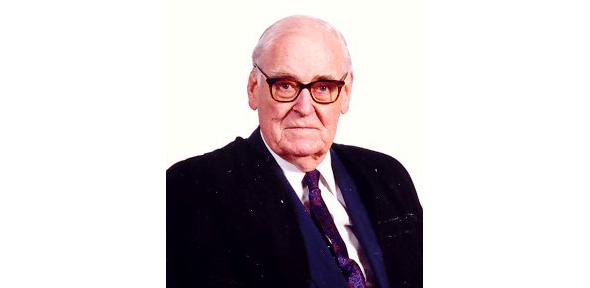
Professor Sir William Hawthorne, former Head of the Department of Engineering and Master of Churchill College, died on Friday 16th September aged 98. He played a crucial role in the team that developed the gas turbine jet engine in Britain during the Second World War.
Sir William read Mathematics and Mechanical Sciences at Trinity College, graduating in 1934. He spent two years as a graduate apprentice with Babcock and Wilcox Ltd, before going to MIT to do research on laminar and turbulent flames.
He returned to the UK in 1940 and joined the Royal Aircraft Establishment at Farnborough. He was seconded from there to Power Jets Ltd the company founded by Frank Whittle to develop the world’s first operational jet engines. He worked with Frank Whittle on combustion chamber development for the jet engine. He was appointed George Westinghouse Professor of Mechanical Engineering at MIT at the age of 35.
In 1951 he returned to Cambridge to be elected a Fellow of Trinity and take up the newly created Hopkinson and ICI chair in Applied Thermodynamics. Here he developed teaching and research facilities in engineering thermodynamics and continued his research on the theory of flow in compressors and turbines.
His most important work at Cambridge, however, was to improve the understanding of inefficiencies and loss of performance in turbomachinery, such as jet engines (or even wind turbines). During his time as head of the Department of Engineering, from 1968 to 1973, he and Professor Sir John Horlock established the Turbomachinery Laboratory.
In 1956 the oil shortage after the Suez Crisis led Sir William to develop an idea for using flexible tubes, made of rubberised cotton dinghy fabric, as oil barges, to be filled with oil and towed by existing tankers. The advantage of these plastic vessels, christened Dracones, was that they could be rolled up and returned quickly, even by air, to the source of supply.
Sir William was a Fellow of the Royal Society, a Founder Fellow of the Fellowship of Engineering, which subsequently became the Royal Academy of Engineering, and was knighted in 1970. He was active on many committees and advisory bodies concerned with energy matters and chaired the Advisory Council on Energy Conservation.
Sir William was a popular Master of Churchill College (1968-1983).
In 1939 he married Barbara Runkle. She died in 1992, and he is survived by their son and two daughters.

